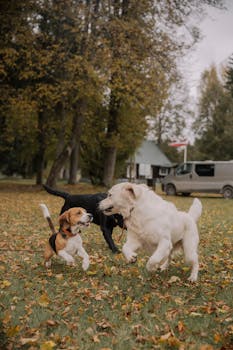Unveiling the Secrets of Dog Grooming: Expert Tips for a Pampered Pooch
Introduction: Welcome, fellow pet enthusiasts, to a journey into the wonderful world of dog grooming! In this comprehensive guide, we're going to delve deep into the secrets of keeping your beloved canine companion looking and feeling their absolute best. From the importance of pet hygiene to expert tips on choosing the right dog shampoo, we'll leave no stone unturned in our quest to pamper your pooch like royalty.
Understanding the Importance of Pet Hygiene in Dog Grooming:
Pet grooming is more than just a cosmetic concern; it's a fundamental aspect of responsible pet ownership. Proper pet hygiene plays a crucial role in maintaining your dog's overall health and well-being. Regular grooming not only keeps your furry friend looking tidy and adorable but also helps prevent a host of health issues such as skin infections, matting, and parasites.
To ensure your pooch stays clean and healthy, it's essential to establish a regular grooming routine that includes bathing, brushing, nail trimming, and ear cleaning. By incorporating these tasks into your dog's care regimen, you'll not only enhance their physical appearance but also strengthen the bond between you and your four-legged friend.
Essential Tools and Products for Effective Dog Grooming:
Before you embark on your dog grooming journey, it's crucial to gather the right tools and products to ensure a successful grooming session. From brushes and combs to pet shampoo and conditioner, having the proper equipment on hand will make the grooming process much more manageable and enjoyable for both you and your pet.
When selecting grooming products, opt for high-quality, pet-safe formulas that are specifically designed for dogs. Look for gentle pet shampoos that are free from harsh chemicals and artificial fragrances, as these can irritate your dog's skin and coat. Additionally, invest in a good-quality brush or comb suited to your dog's breed and coat type to effectively remove tangles and loose fur.
Step-by-Step Guide to Bathing Your Dog with the Right Pet Shampoo: Bathing your dog is an essential part of their grooming routine, but it's essential to approach it with care and caution to ensure a positive experience for both you and your pet. Begin by gathering all necessary supplies, including pet shampoo, towels, and a non-slip mat to prevent accidents in the tub.
Before bathing your dog, brush out any tangles or mats in their coat to ensure thorough cleaning. Then, gently wet your dog's fur with warm water, carefully avoiding their eyes and ears. Apply a small amount of pet shampoo to your hands and lather it into your dog's coat, focusing on areas that are particularly dirty or odorous.
Pro Tips for Handling Dog Grooming Challenges with Ease:
While grooming your dog can be a rewarding experience, it's not without its challenges. From wriggly puppies to stubborn matting, there are a few common obstacles that pet owners may encounter during the grooming process. However, with a little patience and perseverance, you can overcome these challenges and ensure a successful grooming session every time.
If your dog is particularly anxious or resistant to grooming, try introducing them to the process gradually and using positive reinforcement techniques such as treats and praise to encourage good behavior. Additionally, don't hesitate to seek professional help if you're struggling with grooming tasks such as nail trimming or ear cleaning. A qualified groomer can provide expert guidance and assistance to help you navigate these challenges with confidence.
Maintaining Pet Hygiene Beyond Bath Time: Daily Care Tips for a Healthy Pooch:
While regular baths are essential for keeping your dog clean and smelling fresh, pet hygiene goes beyond just bath time. Incorporating daily care tasks into your dog's routine can help maintain their overall health and well-being between grooming sessions.
Make sure to brush your dog's coat regularly to remove loose fur and prevent matting, paying extra attention to areas prone to tangles such as behind the ears and under the legs. Additionally, clean your dog's ears and trim their nails as needed to prevent infections and discomfort. Finally, don't forget to schedule regular check-ups with your veterinarian to ensure your dog stays happy and healthy for years to come.
Conclusion: Congratulations! You've now unlocked the secrets of dog grooming and are well-equipped to pamper your pooch like a pro. By following the expert tips outlined in this guide, you can ensure that your furry friend stays clean, healthy, and happy for years. Remember, grooming isn't just about keeping your dog looking good—it's about nurturing the special bond you share and providing the best possible care for your beloved pet.
Now that you've learned all about dog grooming, we'd love to hear from you! How do you bathe your pet? Share your favorite grooming tips and tricks in the comments below, and let's continue the conversation. Your insights could help fellow pet owners create a happier, healthier home for their furry friends.

